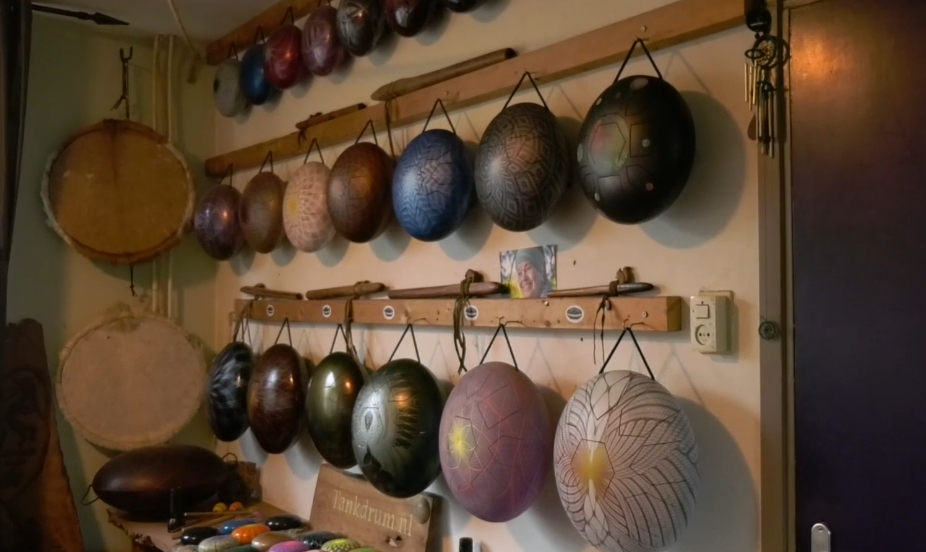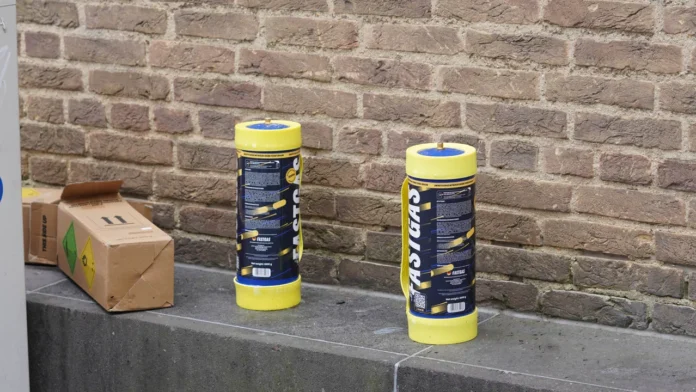It is not only the garden of Nico Bruins from Gestel that is full of laughing gas canisters. The cylinders are also piling up at Cure Afvalbeheer (cure waste management). In three months, 1,226 items were returned to recycling centres in the city alone. “It worries us”, the Municipality of Eindhoven said.
Recreational use of laughing gas has been banned in the Netherlands for over a year. Yet nitrous oxide canisters have all but disappeared from the streets. Artist Nico Bruins came across them every now and then and decided to make musical instruments from them. The brightly coloured canisters are not an unfamiliar sight for municipal employees who clean the city either. There are no exact figures, but the municipality still finds the situation worrying. For several reasons.
Inhaling the drug is not without its dangers. “Serious health risks and a greater risk of traffic accidents,” the spokesperson lists some of the dangers. In addition, the cylinders also cause damage at waste processing plants. “Because the release of nitrous oxide upon contact with fire can lead to explosions”.
Mixed feelings
The municipality therefore looks at the art works of the artist from Gestel with mixed feelings. “We can appreciate the creative aspect of collecting nitrous oxide cylinders to make musical instruments”.

The spokesperson does add a comment. “However, we must be cautious about promoting behaviours associated with nitrous oxide use, given the processing risks, health risks and social issues associated with it”.
For the time being, however, Nico Bruins can still scour hangouts to his heart’s content in search of nitrous oxide cylinders. According to the municipality, the number of canisters on the street is increasing because there is no longer a return deposit since the ban. So Cure Afvalbelheer appeals to users:
“They can hand them in to the recycling centres without any consequences. We have a method in which we make these cylinders harmless and process them into metal scrap. In this way, it is then delivered to the right processor. This prevents dangerous situations in public spaces”.
Source: Studio040
Translated by: Bob











